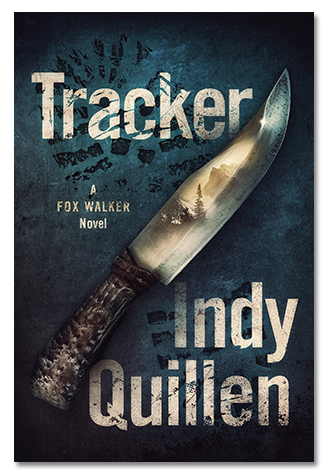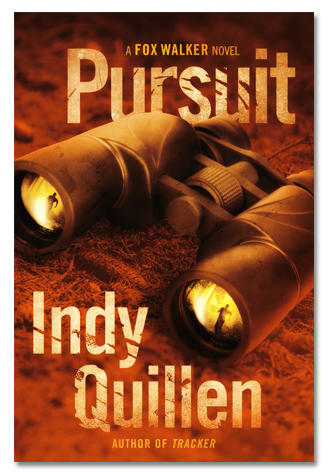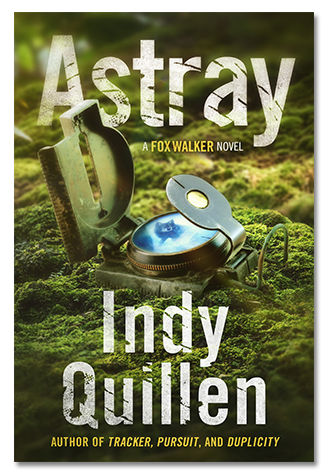No matter where you live, whether your part of the country experiences earthquakes, wildfires, seasonal floods or hurricanes, we all have our own set of natural disasters and dangerous conditions that might mean evacuation…
 We used to live in Southern California—earthquake country—which meant we had no forewarning for when one might hit. Add in the fact that we often experienced exceptionally long droughts meant dangers of uncontrolled wildfires were often on the horizon.
We used to live in Southern California—earthquake country—which meant we had no forewarning for when one might hit. Add in the fact that we often experienced exceptionally long droughts meant dangers of uncontrolled wildfires were often on the horizon.
Those two scenarios gave us little or no warning that we may need to evacuate our homes. If we survived a sudden earthquake, but our place was damaged, we might have found ourselves needing to leave before more after-shocks arrive, and find a safer place to stay until repairs can be made. With wildfires, there was a high probability that we could have been forced to leave by the authorities, without time to pack or take much with us. Lives are on the line!
Even today where I live in the Pacific Northwest, I think about having to evacuate due to earthquake or wildfires more than those who have to hunker down and ride out a snowstorm in Montana or Wisconsin. Many of you have to contend with seasonal floods or hurricanes. Being able to evacuate quickly could save lives, no matter where you currently reside.
 Those of you who regularly read my blog know that we have an emergency pack (sometimes called a “Get Back Home Bag”) in each of our vehicles. These packs contain everything from First Aid kits, space blankets, multi-tools, flashlights and fire making components, to a LifeStraw for obtaining drinking water. You can see the full list on my Blog: Survival Tip: Emergency car Kit
Those of you who regularly read my blog know that we have an emergency pack (sometimes called a “Get Back Home Bag”) in each of our vehicles. These packs contain everything from First Aid kits, space blankets, multi-tools, flashlights and fire making components, to a LifeStraw for obtaining drinking water. You can see the full list on my Blog: Survival Tip: Emergency car Kit
If we need to evacuate immediately, at the very least we have the emergency packs in our vehicles, along with blankets and extra water. Not a bad place to start.
But if you have more time to evacuate and can take some items with you, how do you choose what to take when your mind is racing and the adrenaline pumping? You might grab a box of photos and forget your important documents.
That’s why it’s a good idea to have a plan, and gather all your items into one centrally located spot in your home. That way you can efficiently grab everything and go – confident that you have the necessities.
In our case, we have extensive supplies for camping and backpacking, which are two activities we enjoy. But I realized that in the case of a rush evacuation, we needed to have some supplies handy in our living space, and an easy way to move them to a vehicle. I had also come to the realization (after a power outage) that even my emergency supplies were scattered here and there within our home. I decided that a centralized storage area made sense, both for ease of finding supplies and for a quick evacuation.
I’ve opted to use plastic tubs for my evacuation/emergency supplies. They are inexpensive (Lowe’s), come in all sizes, are stackable, easy to grab and carry (or load on a two-wheeler) and they’re durable and water resistant (think rain or fire sprinklers).
Below is a general guide to how I decided to organize my emergency supplies, but every family has different needs and you would want to think carefully about what would be important for your situation. Do you have children? Pets? Elderly parents?
Documents and Photos:
Important papers, documents, passports, and photos can be scanned and placed on a thumb drive. If you don’t have these capabilities, don’t worry – just make copies and put them in one binder, which can be stored in one of the bins.
Emergency Lighting:
Of course I have the usual variety of flashlights, headlamps and lanterns—plus a store of batteries. But one of my smaller bins contains all types of candles; from tapers, to jar candles, to sterno candles, candleholders and lots of boxes of matches. These could come in handy during a long power-outage as we could save batteries and use candles during the times we are awake.
First Aid and Medications:
Another small bin holds all types of First Aid supplies. Think of it as an extended First Aid kit beyond what your emergency car kits contain. I use it for bulky items such as boxes of 3-inch guaze pads, rolls of self-adherent medical wrap and N95 Dust Masks. It’s a good idea to have an extra supply of prescription medications on hand, too. In case you can’t get to a pharmacy right away, or they are closed.
Emergency Food:
 A large bin contains emergency foods. For our family this bin contains foods that could sustain us through a short time away from home. It does not constitute all our food in our pantry and long-term storage. For that reason it contains freeze-dried food pouches that are quick, easy meals made by adding boiling water added to the pouch, with no pans needed. Also there are canned meats that can be opened and eaten without being heated, if there is no power. And the freeze-dried cans of vegetables and fruit can be opened and eaten like snacks, without reconstituting with water. There are also handy items, such as a jar of raw honey, which can be used as a food source as well as for medical purposes. Your bin might include pet food or some of your children’s favorite treats. In a disaster situation favorite foods can comfort small children (and adults!).
A large bin contains emergency foods. For our family this bin contains foods that could sustain us through a short time away from home. It does not constitute all our food in our pantry and long-term storage. For that reason it contains freeze-dried food pouches that are quick, easy meals made by adding boiling water added to the pouch, with no pans needed. Also there are canned meats that can be opened and eaten without being heated, if there is no power. And the freeze-dried cans of vegetables and fruit can be opened and eaten like snacks, without reconstituting with water. There are also handy items, such as a jar of raw honey, which can be used as a food source as well as for medical purposes. Your bin might include pet food or some of your children’s favorite treats. In a disaster situation favorite foods can comfort small children (and adults!).
Drinking Water:
 I like the Water Brick for keeping a supply of safe drinking water on hand. Each Brick holds 3.5 gallons of water – a weight even I can transport – with an easy to carry handle. And they stack in a compact space. You can also use these Bricks for food storage. They are especially popular for keeping pet food on hand for emergencies. Always remember to prepare for your pets as well as people. They are part of your family, too! I also keep some gallon jugs of non-potable water on hand for flushing toilets or washing hands if the water is turned off.
I like the Water Brick for keeping a supply of safe drinking water on hand. Each Brick holds 3.5 gallons of water – a weight even I can transport – with an easy to carry handle. And they stack in a compact space. You can also use these Bricks for food storage. They are especially popular for keeping pet food on hand for emergencies. Always remember to prepare for your pets as well as people. They are part of your family, too! I also keep some gallon jugs of non-potable water on hand for flushing toilets or washing hands if the water is turned off.
Emergency Survival Equipment:
One of our bins contains some of our small lightweight backpacking equipment, including: a portable water filter, hand-held HAM Radio, emergency lighting (some battery, some hand crank), such as flashlights, small lanterns and headlamps, a one burner stove that uses white gas+ gas canisters, lots of paracord, and one of my favorite purchases; Fishbone Knotless Gear Ties.
Backup Supplies:
 My largest bin contains all sorts of items that might come in handy in an emergency situation, such as toilet paper, trash bags, foil, paper towel, paper plates and plastic utensils, sponges, disposable plastic gloves…you get the idea. None of this has to be expensive. You can see in the photo how many items I purchased for a mere $7 at the Dollar Store! Use your imagination. And whenever you are shopping, just pick up two of something instead of one. Soon, you’ll have a great start on your emergency supplies. And the best part is you have a backup of supplies if you run out of something and don’t want to go to the store yet – like during a blizzard! Just open up your emergency bin and get what you need. Of course, make sure you replace it the next time you shop!
My largest bin contains all sorts of items that might come in handy in an emergency situation, such as toilet paper, trash bags, foil, paper towel, paper plates and plastic utensils, sponges, disposable plastic gloves…you get the idea. None of this has to be expensive. You can see in the photo how many items I purchased for a mere $7 at the Dollar Store! Use your imagination. And whenever you are shopping, just pick up two of something instead of one. Soon, you’ll have a great start on your emergency supplies. And the best part is you have a backup of supplies if you run out of something and don’t want to go to the store yet – like during a blizzard! Just open up your emergency bin and get what you need. Of course, make sure you replace it the next time you shop!
 At this point you may be thinking that you don’t have room to do something like this. But it doesn’t have to take up much space at all. For a few years we lived in an apartment, so I cleared out a 2-foot section of my clothes closet (and donated the clothes) then stacked everything in that one spot. I started with four Water Bricks (which are stackable and extra durable), then stacked my bins on top of the bricks, largest to smallest. You’ll notice in the photo that I had post-its notes on each one denoting what was is inside. Now all my tubs have printed labels taped to them.
At this point you may be thinking that you don’t have room to do something like this. But it doesn’t have to take up much space at all. For a few years we lived in an apartment, so I cleared out a 2-foot section of my clothes closet (and donated the clothes) then stacked everything in that one spot. I started with four Water Bricks (which are stackable and extra durable), then stacked my bins on top of the bricks, largest to smallest. You’ll notice in the photo that I had post-its notes on each one denoting what was is inside. Now all my tubs have printed labels taped to them.
Some of my bins are more for handy storage, than for evacuation. But I would grab whatever I could in the time allotted. You never know what you might need while away from your home!


 Being outside in nature is the most basic part of who I am. Besides gaining knowledge about wildlife, I learn lessons about who I am, and surprise myself about what I am capable of achieving. Nature continually inspires me. It is a part of all my writings, no matter the genre or subject matter.
Being outside in nature is the most basic part of who I am. Besides gaining knowledge about wildlife, I learn lessons about who I am, and surprise myself about what I am capable of achieving. Nature continually inspires me. It is a part of all my writings, no matter the genre or subject matter. 





Having survived the 2003 and 2007 San Diego wildfires (2003 just barely), we’re at least a little better prepared–with a fireproof safe containing all our important papers. I imagine we could do even better, especially now living on the edge of the Carlsbad Preserve.
I agree, Mike – a fire-proof safe is a must! I think the wildfires have been a wake-up call for many of us. I had no idea we might be in danger since we live in the city and so close to the beach – but the Carlsbad fire proved me wrong!
Excellent, very specific information, even including an efficient way of storing the emergency supplies! For years my hubby & I kept an emergency kit; but after a while it fell into neglect, and we stopped doing it. Your post is a good reminder that we need to start again.
Thank you for the kind words and I’m glad you found it helpful—but mostly I’m happy to hear that it reminded you to get prepared again. Yah!